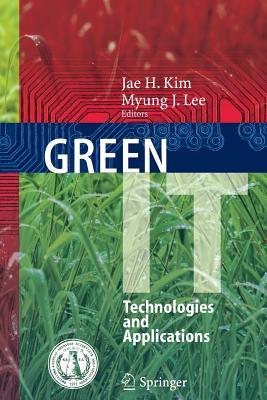

Most ebook files are in PDF format, so you can easily read them using various software such as Foxit Reader or directly on the Google Chrome browser.
Some ebook files are released by publishers in other formats such as .awz, .mobi, .epub, .fb2, etc. You may need to install specific software to read these formats on mobile/PC, such as Calibre.
Please read the tutorial at this link: https://ebookbell.com/faq
We offer FREE conversion to the popular formats you request; however, this may take some time. Therefore, right after payment, please email us, and we will try to provide the service as quickly as possible.
For some exceptional file formats or broken links (if any), please refrain from opening any disputes. Instead, email us first, and we will try to assist within a maximum of 6 hours.
EbookBell Team

5.0
70 reviews
ISBN 10: 3642221785
ISBN 13: 9783642221781
Author: Jae H Kim, Myung J Lee
This book is the first of its kind in presenting comprehensive technical issues and solutions for rapidly growing Green IT. It brings together in a single volume both green communications and green computing under the theme of Green IT, and presents exciting research and developments taking place therein in a survey style. Written by the subject matter experts consisting of an international team of recognized researchers and practitioners in the field, Green IT: Technologies and Applications will serve as an excellent source of information on the latest technical trend of Green IT for graduate/undergraduate students, researchers, engineers, and engineering managers in the IT (Electrical, Communications, Computer Engineering, Computer Science, Information Science) as well as interdisciplinary areas such as sustainability, environment, and energy. The book comprises three parts: Green Communications, Green Computing, and Smart Grid and Applications. Part I Green Communications deals with energy efficient architectures and associated performance measures in wireless communications. It covers energy issues in PHY, MAC, Routing, Application layers and their solutions for a variety of networks. Part II Green Computing deals with various energy issues in data centers, computing clusters, computing storage, and associated optimization techniques. Energy management strategies are presented to balance between energy efficiency and required qualities of services. Part III Smart Grid and Applications presents an overview and research challenges for smart grid. Applications include modeling of urban pollutant for transportation networks, Wireless Sensor Network (WSN) architecture with long range radio, and Green IT standards.
Green Communications Technology
Evolving Communications Architectures: More Local Is More Green
Towards Green Wireless Communications: Metrics, Optimization and Tradeoff
Energy-Aware Link Adaptation for a MIMO Enabled Cognitive System
Energy Efficient MAC
Energy-Efficient Routing in Delay-Tolerant Networks
Relay Selection Strategies for Green Communications
Cooperative Relay Scheduling in Energy Harvesting Sensor Networks
Energy-Efficient Parallel Packet Forwarding
Energy Consumption Analysis and Adaptive Energy Saving Solutions for Mobile Device Applications
Energy Efficient GPS Emulation through Compasses and Accelerometers for Mobile Phones
Energy-Efficiency Networking Games
Green Computing Technology
Energy Efficiency of Data Centers
Energy-Conservation in Large-Scale Data-Intensive Hadoop Compute Clusters
Energy-Efficient Computing Using Agent-Based Multi-objective Dynamic Optimization
Green Storage Technologies: Issues and Strategies for Enhancing Energy Efficiency
Sustainable Science in the Green Cloud via Environmentally Opportunistic Computing
Smart Grid and Applications
green it application
green technologies in illinois
green technologies of ohio
green tech of iowa
q&a green screen
Tags: Jae H Kim, Myung J Lee, Technologies, Applications